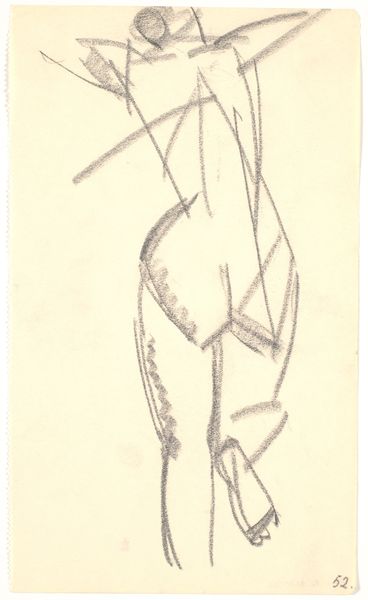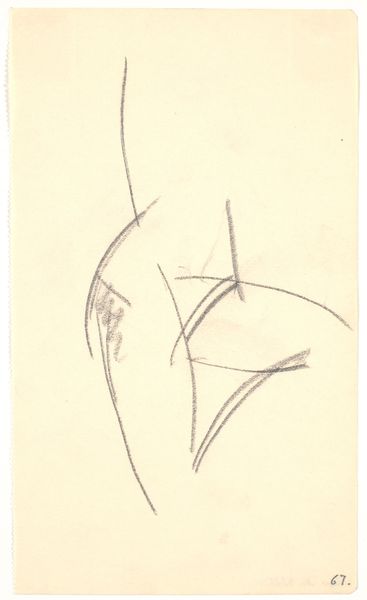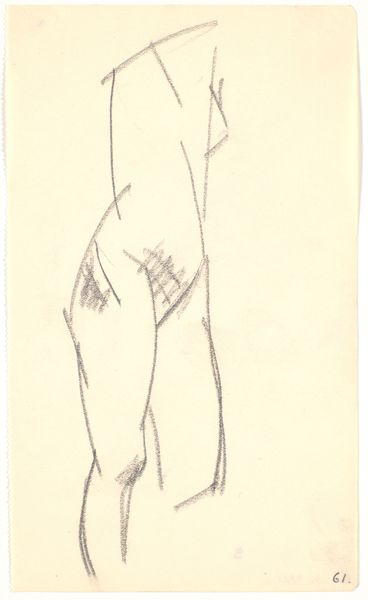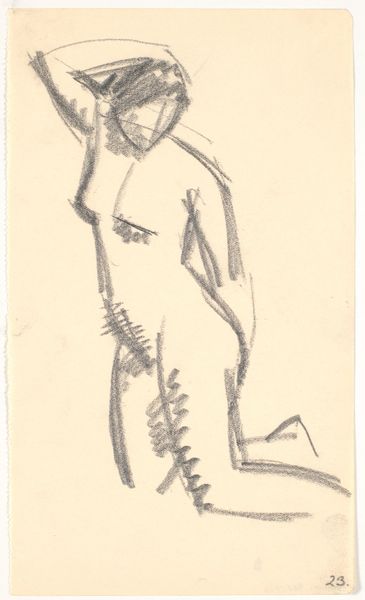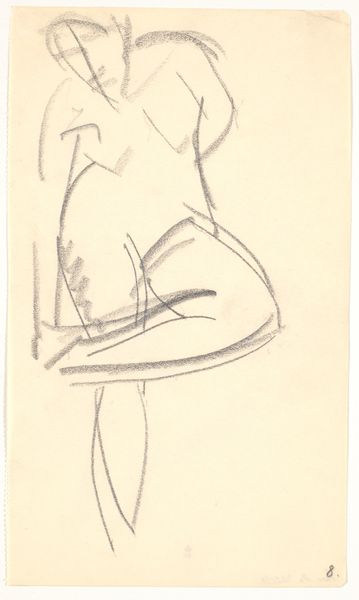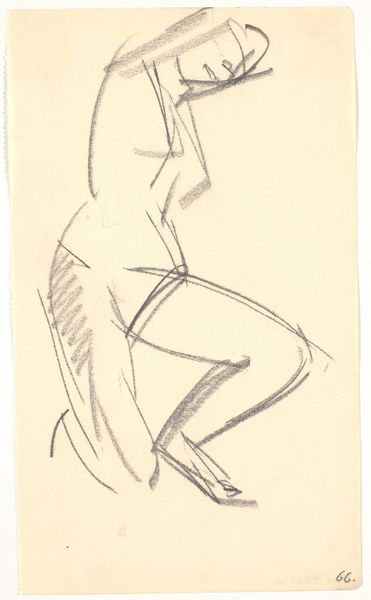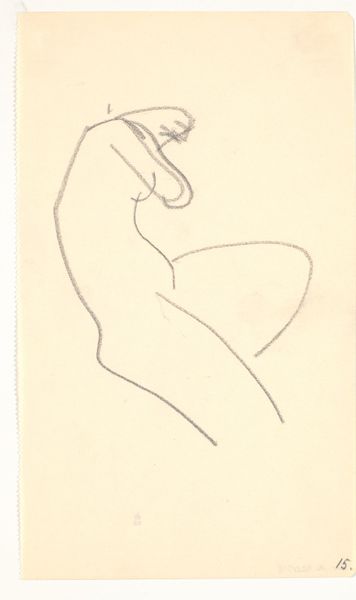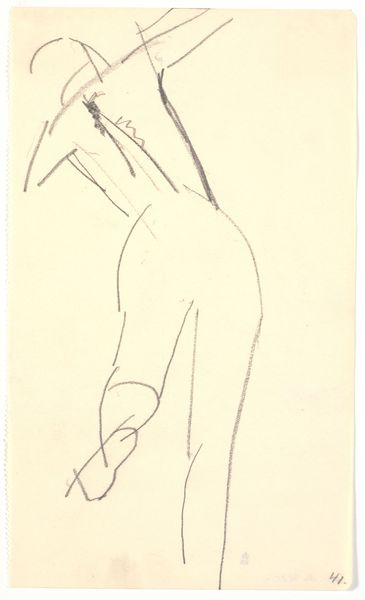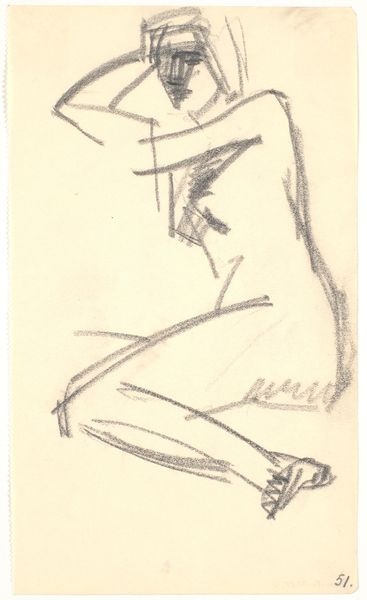
drawing, pencil
#
drawing
#
figuration
#
pencil
Dimensions: 209 mm (height) x 124 mm (width) (bladmaal)
Editor: We're looking at "Standing Model, Seen From Behind" by Karl Isakson, a pencil drawing made between 1914 and 1915. The figure's pose is so intriguing – it's almost geometric. What strikes you most about its composition? Curator: Immediately, the emphasis on line and form captivates. Observe how Isakson employs a deliberate economy of line to delineate the human figure. Notice also the structural integrity achieved with what appear to be very simple formal decisions. Editor: It almost looks unfinished in places. Curator: Indeed, and those 'unfinished' areas are where we observe a tension between representation and abstraction. They allow us to perceive the underlying structure – the essential architecture – of the form. Where do your eyes tend to linger? Editor: I keep coming back to the head and shoulders… they’re the most abstract part, but they give the whole piece a sense of dynamism. The lines seem to indicate movement and balance at the same time. Curator: Precisely. Those fragmented lines create visual vectors which prompt the eye to perpetually circulate. A closed, unified form would present a static image. The genius here lies in Isakson's strategic use of the incomplete. We gain a potent dynamism because our eyes must engage and resolve. What would you say we’ve learned today? Editor: I've realized that a piece doesn't have to be hyper-realistic to convey movement, emotion, and meaning. Thanks to your comments, I am inspired by Isakson’s skillful use of form and line. Curator: Agreed. A drawing’s power comes not necessarily from perfect replication but from artful formal invention and material qualities.
Comments
No comments
Be the first to comment and join the conversation on the ultimate creative platform.
